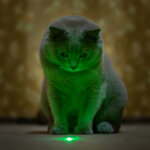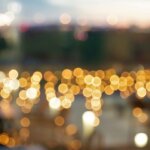Blue LEDs – as cool as they look?
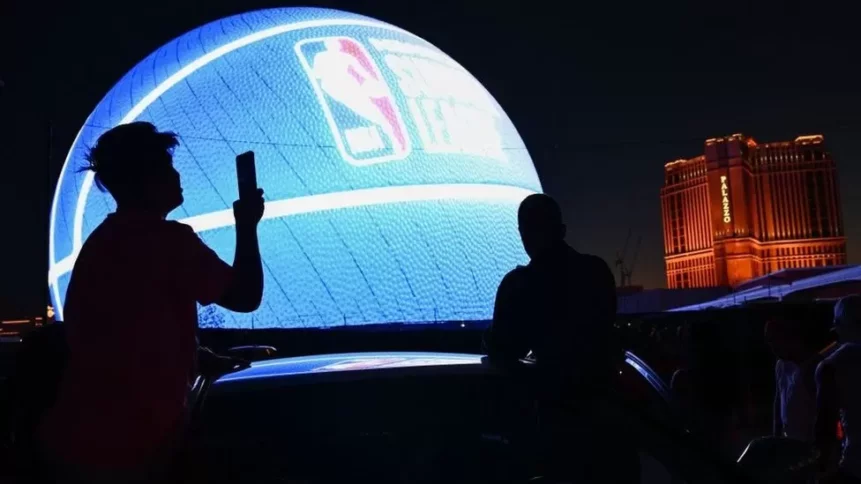
• Stadium lights at Michigan Stadium have gone blue, thanks to advances in LED technology.
• The potential of LED lights is bigger than entertainment though.
• If they can be made cheaper and easier – as seems likely, LEDs could help with our carbon footprint.
As fall draws in, floodlights are being turned on across football fields and basketball courts. Stadium lights ensure that fans don’t lose a moment of the action to shadow. At Michigan Stadium on September 16th though, a new visual entertainment system debuted and drenched the stadium in blue light.
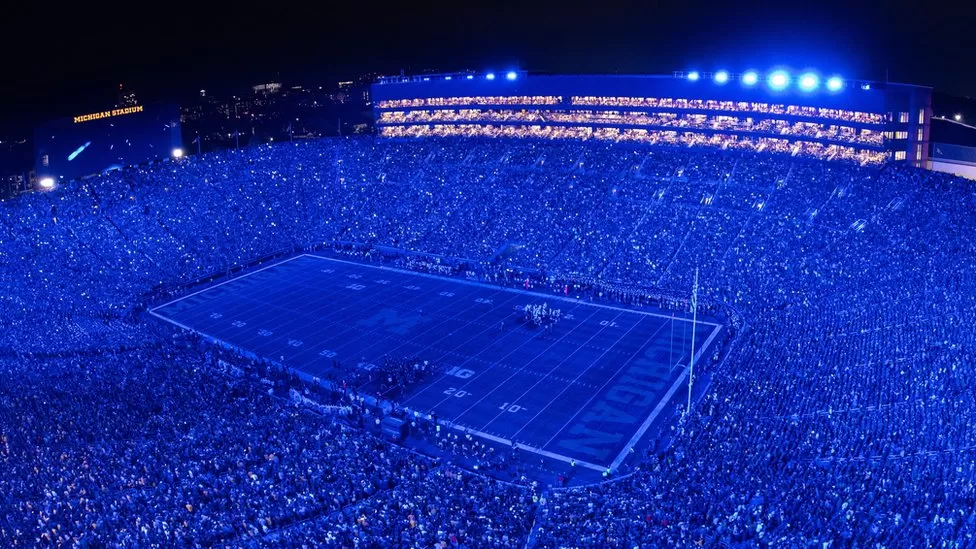
Michigan Stadium – because blue lights matter. Via BBC.
A light show designed to match the University of Michigan’s colors, maize (yellow) and blue, “100% has an impact on the experience within the stadium,” said Jake Stocker, director of game presentation and fan experience at the University of Michigan.
“It’s one more exciting element of coming to a football game that you’re not getting [sat] at home on your couch,” he explained.
The stadium lights at Michigan, as at many stadiums, were LEDs.
So what? LEDs are nothing new. Every other freshman dorm is lined with strips of them, color changeable from an app to set the perfect mood. But, not long ago, blue LEDs – especially ones powerful enough to illuminate an entire stadium – would have been out of the question.
Bright blue LEDs were only invented in the 1990s. The scientists who came up with the technology received a Nobel Prize.
Yet, throughout the 1970s and 1980s, LEDs had been routinely dismissed: “There’s no way that this little dinky toy light is going to do anything useful – that was the attitude at the time,” says Paul Scheidt, senior product marketing manager at Cree LED, a major manufacturer of the devices.
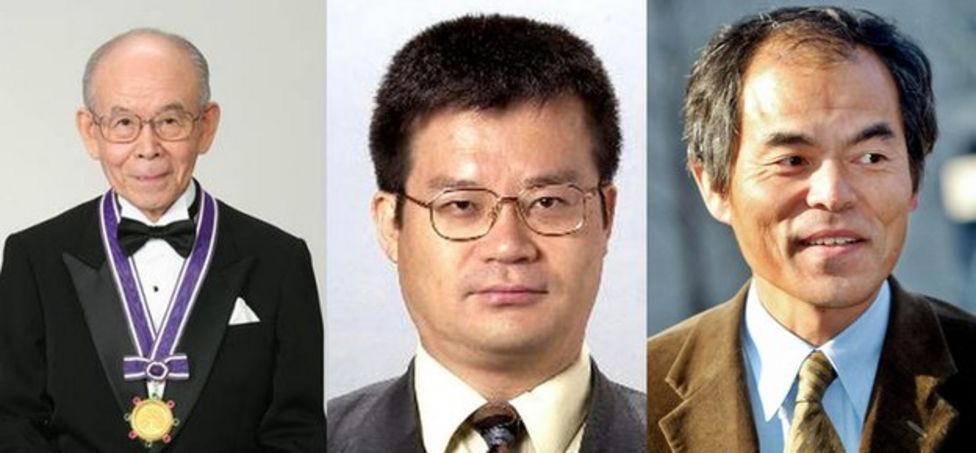
Professors Akasaki, Amano and Nakamura made the first blue LEDs in the early 1990s.
Now, Michigan Stadium is lit with the technology, suggesting a proof of concept, at least. According to researchers though, LEDs could get even cheaper and more energy efficient than they are today. And if they do, it could revolutionize everything from outdoor lighting to VR headsets. For VR and AR, extremely bright LEDs are needed to create clear imagery.
Current OLED displays aren’t bright enough, according to Keith Strickland, chief executive officer at Plessey Semiconductors, a British firm working with Meta. The company is developing micro LEDs, less than a third of the thickness of a human hair.
Musco Lighting provided the entertainment lighting systems with red (R), green (G) and blue-emitting (B) LED units or luminaires to Michigan Stadium. RGB systems can emit a huge range of colors by mixing red, green and blue at varying intensities.
Brad Schlesselman, senior researcher at Musco Lighting, said “it’s getting down to even the high school level where there’s a demand for the colour-changing and theatrical stuff that we’re seeing in Michigan.”
Rhapsody in blue
Plus, in the era of corporate virtue signalling, it’s not just stadium lights that use LEDs for fun color. Towns and cities in the US are lighting local landmarks, including water towers, for special events or occasions, like pink for October’s breast cancer awareness month.
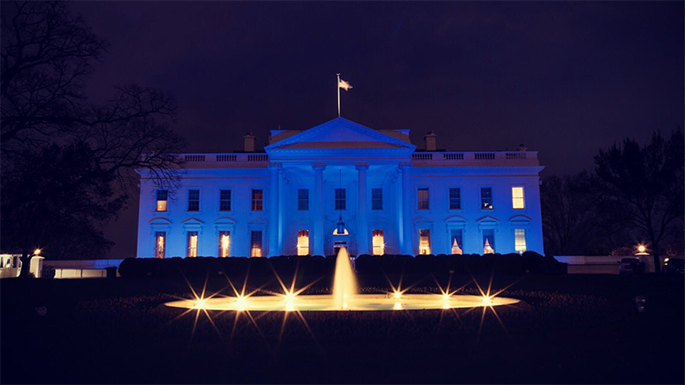
Thank you, Mr President: the White House lit blue for World Autism Awareness in 2018.
It would be remiss to talk about impressive feats of LED lighting without mentioning the Las Vegas Sphere. Opened last month, the new addition to the skyline is lit by millions of LEDs, which can transform into almost any pattern or image imaginable. Stadium lights inside the sphere are also powered by LEDs.
So, what changed? How did LEDs go from being nothing more than a tiny red indicator light to ubiquitous, bright color lighting?
The Las Vegas sphere rocking it for Halloween #Halloween #VegasSphere pic.twitter.com/lRf5uTuh0V
— HalloweenVerse (@HalloweenVerse) October 8, 2023
LEDs beam out light when electrons – negatively charged particles – within the device drop from a higher energy state to a lower one. The process releases energy in the form of light – engineers were able to produce LEDs that emitted far more photons by manipulating the size of the drop (called the bandgap).
Different materials affect the bandgap and the wavelength, or color, of the light emitted. Blue was especially hard because the key material necessary to the hue, gallium nitride, was difficult to manufacture without defects.
Blue has a large bandgap and is a powerful, high energy color. Blue LEDs can be used as the basis for all other colors in some TV displays: each pixel has three blue LEDs, but two are filtered to produce red and green hues.
Blue light can be adjusted using phosphors to create white light, too, so blue LEDs are often used to do precisely that.
Still, there’s potential for more breakthroughs as scientists believe the technology could be even more efiicient. Dan Congreve and colleagues at Stanford University are working on LEDs made with perovskite crystals, a material often used in solar cells. Perovskites are cheap and easy to make.
Congreve says they’re also “tunable” to your desired color and could even be mixed into a solution and painted onto surfaces as light-emitting layers. The roadblock at the moment is how difficult it is to keep perovskite LEDs to stable.
“We turn them up and we measure them, they’re dead pretty quickly,” says Congreve. Still, he and his colleagues have improved the stability since their first experiments, so the issue is likely beatable.
Separately, in Japan, researchers recently came up with a blue LED that can be powered using a single AA battery supplying just 1.47 volts. Usually, you’d need 4 volts, minimum, so you can do the math yourself in terms of energy and cost savings per LED.
In a paper published in September, the team in Japan explained how they were able to boost the production of photons. Typically, when power is applied to an LED, the internal materials achieve states of excitement that, three times out of four… don’t emit light.
By encouraging these excited states to combine and produce light, less energy is required. You improve the “three times out of four” ratio, and you get light more often.
Can stadium lighting show the way?
The continuing technological development of LEDs will enable impressive stadium lights and drop-of-a-hat shows of political or issue-based solidarity – but the implications of a lighting solution that requires less energy could have huge benefits to the slowing of climate change across the whole of society.
The more we can reduce the use of expensive and eco-costly fluorescent lights and replace them with cheaper, less chemically intense LED lighting, the better for our budgets, and the better for the planet.
Meanwhile, we’ll keep workshopping light puns for an article on the next big breakthrough.






